No Justice for Michael Brown
In the most fundamental sense, there will never be justice for Michael Brown.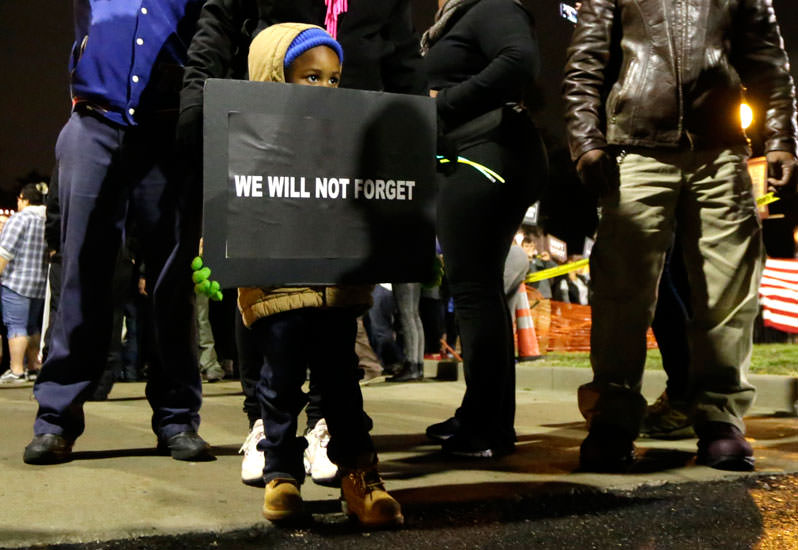 A young boy joins protesters as they gather across the street from the Ferguson, Mo., police station, in a continuing demonstration against the shooting of Michael Brown. AP/Charles Rex Arbogast
A young boy joins protesters as they gather across the street from the Ferguson, Mo., police station, in a continuing demonstration against the shooting of Michael Brown. AP/Charles Rex Arbogast
As the protesters who have gathered yet again in Ferguson and St. Louis, Mo., to demand justice for Michael Brown surely know, they are chasing an illusion. In the most fundamental sense, there will never be justice for Michael Brown.
On Aug. 9, the 6-foot-4, 300-pound 18-year-old known to friends and family as “Big Mike” was gunned down at high noon on a muggy midsummer day by a white Ferguson police officer named Darren Wilson, who had stopped Brown and a friend for walking down the middle of a residential street instead of keeping to the sidewalk.
Six days after Brown’s death, in a ham-fisted attempt to mitigate Wilson’s conduct, the Ferguson Police Department released a surveillance video that it said showed Brown stealing a box of cigarillos from a convenience store and shoving the proprietor on the morning of the shooting. To date, however, no evidence has been publicly disclosed to indicate that Wilson was aware of the alleged theft at the time of the fatal encounter. And although a few purported witnesses have said that Wilson and Brown engaged in a brief physical altercation before the shooting, a great many others have asserted that before the first of six bullets struck Brown’s body, he had raised his hands above his head in a classic and unmistakable sign of surrender.
There is no dispute that after the shooting, Brown’s lifeless body was left festering where he had fallen, blood oozing from his head and torso like so much roadkill, for four hours before finally being hauled away to the morgue. There is also no dispute that Brown was unarmed.
If there were any real justice for Michael Brown, he’d be in the middle of his first semester at Vatterott College, a local technical school, on his way to achieving his goal of becoming a heating and cooling engineer, specializing in air conditioning. At the very worst, he would have been given probation for the convenience store incident. In any event, he’d be alive, with a long future stretching before him.
But now that Brown has joined the ranks of other black teenagers who have been shot dead in recent decades by police at a rate 21 times greater than their white counterparts, the only justice left for his family and supporters is the small kind available through the legal system. And even that is by no means assured.
On Aug. 20, St. Louis County Prosecuting Attorney Bob McCulloch, who has held office since 1991, took the case to a grand jury, which will decide whether there is probable cause to indict Wilson on manslaughter or murder charges. Under Missouri law, McCulloch also had the option of filing a complaint against Wilson on his own initiative and letting a judge determine probable cause at a preliminary hearing.
Ordinarily, a grand jury probe would offer no particular advantages to a potential criminal defendant such as Wilson. Although grand juries trace their origins to the 11th century and were once seen as “bulwarks against oppression,” they have since become little more than rubber stamps for aggressive prosecutors, at whose request, former New York appellate Judge Sol Wachtler once famously quipped, they would “indict a ham sandwich.”
In felony trials in the federal courts — where grand juries are required under the Fifth Amendment unless waived by the defendant — the U.S. Attorney’s Office secures indictments at a rate of more than 99 percent. In St. Louis County, a little less than half of all felonies are presented to grand juries.
But unlike preliminary hearings and trials, which are held in public, grand jury proceedings are conducted in secret and without a presiding judge. Only the prosecutors and witnesses appear before the jurors.
The fact of secrecy alone should call into question the wisdom of convening a grand jury in a case as volatile as Brown’s. This is especially true for a city like Ferguson, in which 67 percent of the inhabitants are black but only three of the police department’s 53 sworn officers are African-American. The city has a long and well-earned history of racial profiling. Last year, black residents accounted for 86 percent of all traffic stops. According to the administrative director of the county Circuit Court, the 12-member grand jury assembled to investigate the case consists of nine whites and only three blacks.
But perhaps the darkest cloud hanging over the Brown grand jury involves McCulloch, whose father was a police officer killed by a black man while on duty in 1964. As Washington Post columnist Dana Milbank has reported, during the head prosecutor’s long tenure, “there have been at least a dozen fatal shootings by police in his jurisdiction … but McCulloch’s office has not prosecuted a single police shooting in all those years.” McCulloch took evidence in four such cases to a grand jury, but ham sandwiches notwithstanding, failed to get a single indictment.
Charging that McCulloch is biased and not genuinely interested in trying Wilson, Brown’s supporters have demanded that he recuse himself and that a special prosecutor be appointed to take his place. A recusal petition circulated by MoveOn.org thus far has gathered over 116,000 signatures.But McCulloch is determined to stay the course. And instead of directing the grand jury to return a specific criminal charge against Wilson, as prosecutors most commonly do, he reportedly is allowing the jurors to decide for themselves what charges, if any, to bring. The grand jury is expected to announce its decision by mid-November.
Even if Wilson is indicted, the prospects for a conviction are similarly doubtful. Although statistics on police misconduct prosecutions are woefully incomplete, those that have been collected weigh heavily in Wilson’s favor. According to the Cato Institute’s National Police Misconduct Reporting Project, which analyzes daily media reports to locate and cross-check news stories about misconduct, 2,346 excessive force complaints were lodged nationwide in fiscal 2009-2010. Of those, 179 prompted prosecutions, but just 79 led to convictions. Similar findings were reached by the National Police Use of Force Database project of the International Association of Chiefs of Police, in reports published in 1999 and 2001.
We’ve seen this movie before, of course, in the 1992 prosecution of the four Los Angeles police officers who pummeled and clubbed motorist Rodney King into submission, and in the trial that ended earlier this year of two cops from Fullerton, Calif., who were acquitted in the beating death of Kelly Thomas, a homeless schizophrenic man. The fact that the King and Thomas confrontations were captured on videotape proved unpersuasive to juries in both instances.
In the end, as in the King case, it may take a federal civil rights prosecution to bring Wilson to justice. But even then, the justice delivered will be of the small-scale variety. For Michael Brown, who is now a statistic and a symbol in America’s long history of institutionalized racial violence, there can be no real or lasting justice. He’s dead, and death is forever.
Your support matters…Independent journalism is under threat and overshadowed by heavily funded mainstream media.
You can help level the playing field. Become a member.
Your tax-deductible contribution keeps us digging beneath the headlines to give you thought-provoking, investigative reporting and analysis that unearths what's really happening- without compromise.
Give today to support our courageous, independent journalists.

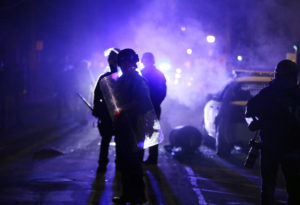
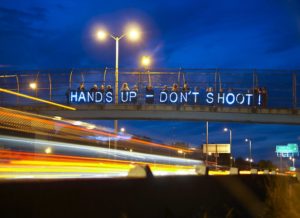
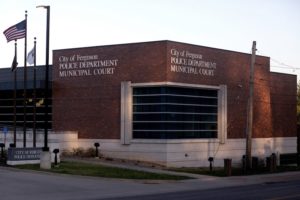
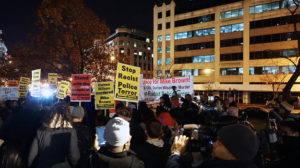

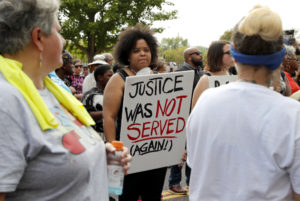


You need to be a supporter to comment.
There are currently no responses to this article.
Be the first to respond.